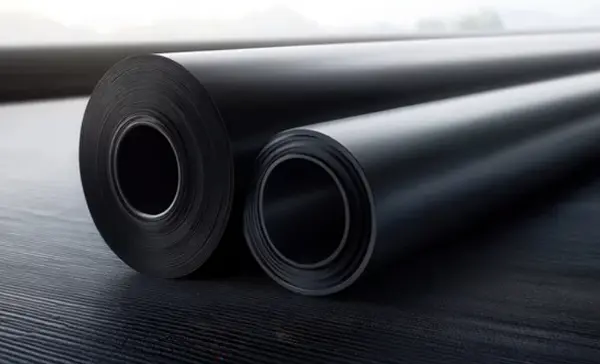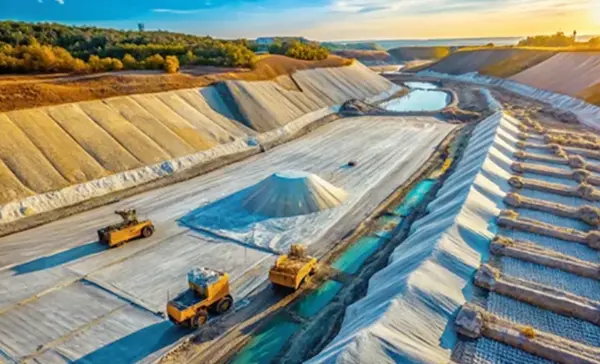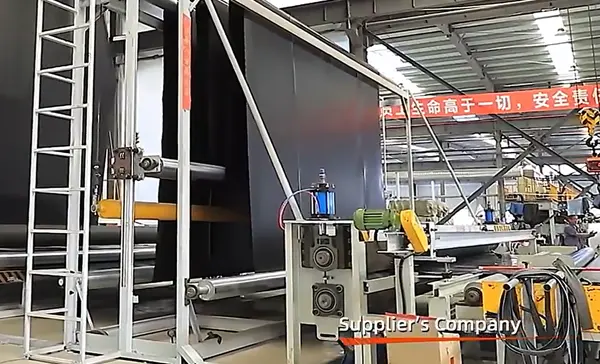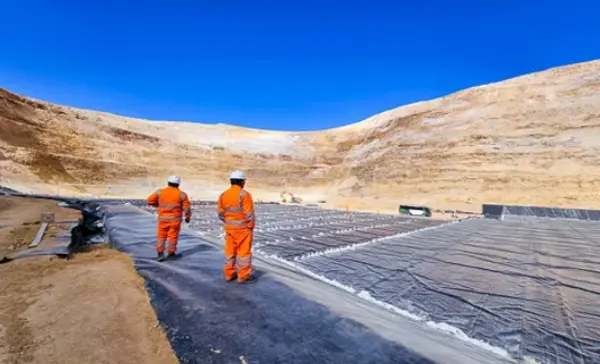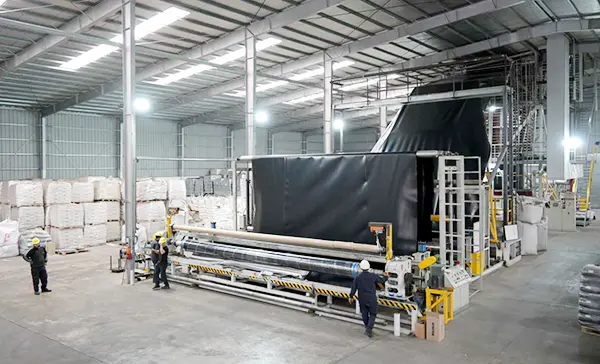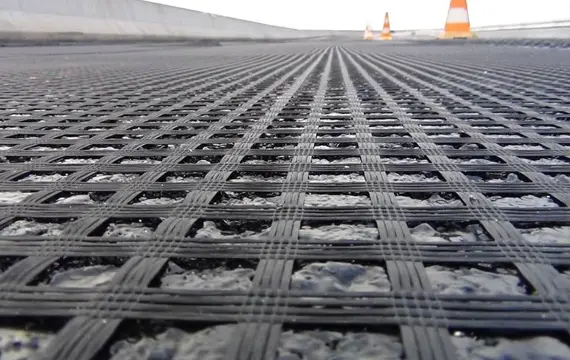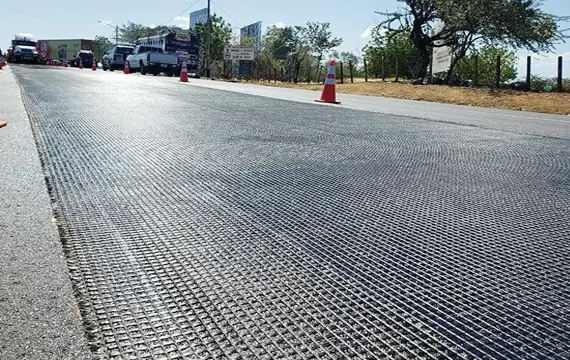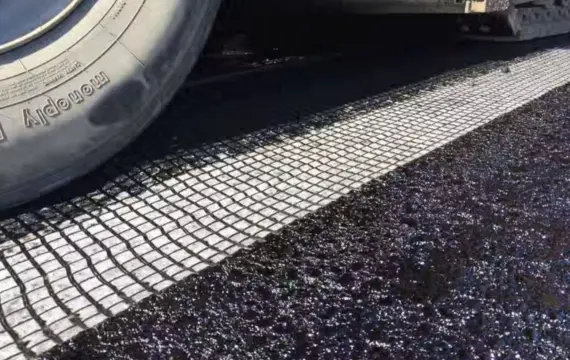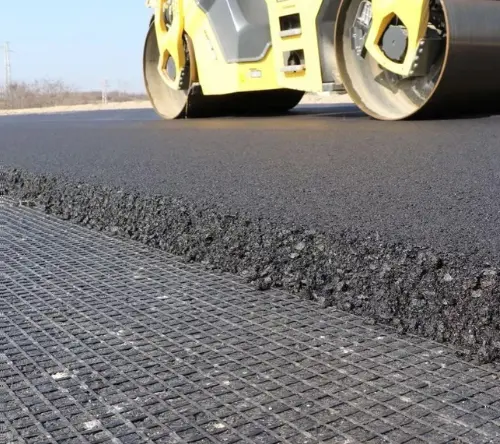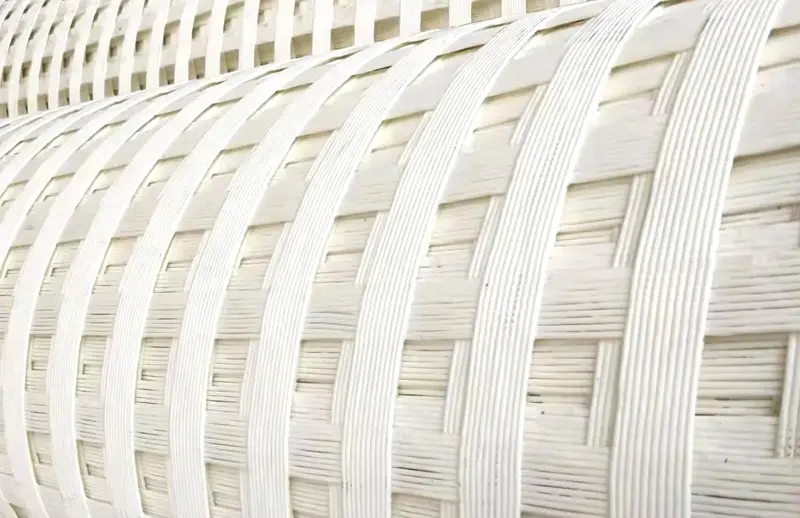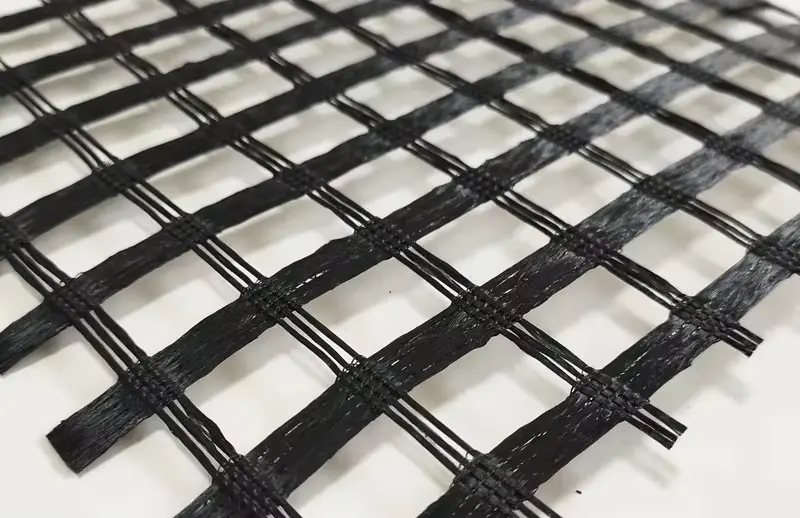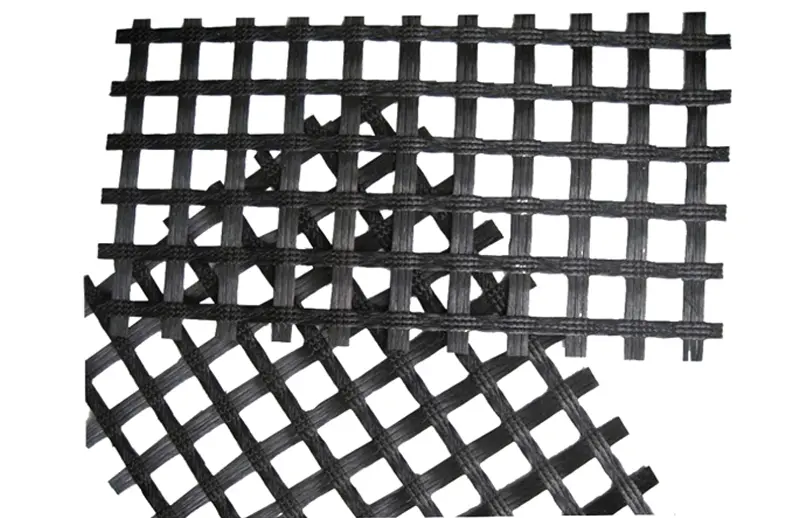
Fiberglass Geogrid
Strength:30-130kn/m
Coating: PVC or Bitumen
Width:1-6m
Length:50-100m/roll
Material: Fiberglass
Fiberglass geogrid uses high-quality reinforced alkali-free fiberglass yarn. Fiberglass geogrid is woven into a base material using advanced foreign warp knitting machines. It adopts a warp knitting directional structure, fully utilizes the yarn strength in the fabric, improves its mechanical properties, and makes the fiberglass geogrid have good tensile strength, tear strength and creep resistance. It is a flat network material treated with high-quality modified asphalt coating.
EGA fiberglass geogrid is an excellent geosynthetic material used for pavement reinforcement, old road reinforcement, roadbed reinforcement and soft soil foundation reinforcement.
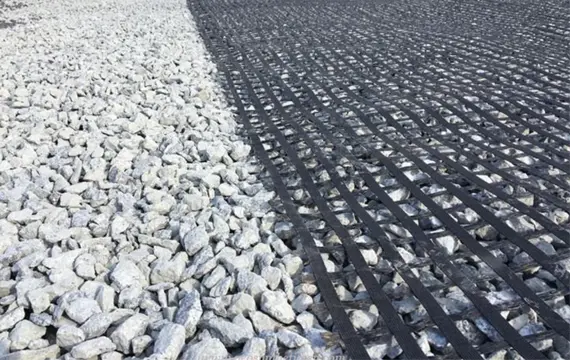
They contain squared structures that are closely spaced both in longitudinal and transverse strands. They are interconnected to each other by knitting.
Grid Strands Aperture Size
Fiberglass geogrids come in different types of aperture size of grid strands depending on the type of structure. It can be customized according to the type of project requirements.

They are typically manufactured through a process of weaving or knitting of raw materials. Fiberglass yarn is the raw material used made from continuous glass filaments that are coated with a polymer material like bitumen for asphalt reinforcement.
Warping is done by creating multiple fiberglass yarns to form a large beam of continuous parallel arrangement ready for weaving or knitting. The arranged yarns are then fed into the weaving machine and interlaced with other yarns that are perpendicularly arranged to form a grid- like structure.
|
Biaxial Geogrid |
|
|
|
|
|
|
|
|
Property |
Test Method |
DK 30-30 |
DK 40-40 |
DK 50-50 |
DK 60-60 |
DK 70-70 |
|
|
Ultimate Tensile Strength (KN/m) |
MD |
EN ISO
|
30 |
40 |
50 |
60 |
70 |
|
|
CD |
30 |
40 |
50 |
60 |
70 |
|
|
Elongation at Maximum Load (%) |
MD |
3 |
|||||
|
|
CD |
3 |
|||||
|
Approximate mesh size (mm) |
|
|
12.7*12.7, 25.4*25.4, 40*40 |
||||
|
Roll width (m) |
|
|
1-6m |
||||
|
Roll Length (m) |
|
|
50-200m |
||||
|
|
|
|
|
|
|
|
|
|
Property |
Test Method |
DK 80-80 |
DK 90-90 |
DK 100-100 |
DK 120-120 |
DK130-130 |
|
|
Ultimate Tensile Strength (KN/m) |
MD |
EN ISO
|
80 |
90 |
100 |
120 |
130 |
|
|
CD |
80 |
90 |
100 |
120 |
130 |
|
|
Elongation at Maximum Load (%) |
MD |
3 |
|||||
|
|
CD |
3 |
|||||
|
Approximate mesh size (mm) |
|
|
12.7*12.7, 25.4*25.4, 40*40 |
||||
|
Roll width (m) |
|
|
1-6m |
||||
|
Roll Length (m) |
|
|
50-200m |
||||
1. Road engineering: used to strengthen the roadbed, reduce cracks and settlement, and extend the life of the road.
2. Railway engineering: strengthen the railway roadbed and improve stability.
3. Water conservancy engineering: used for dams, channels, etc. to enhance structural stability.
4. Slope protection: reinforce the slope to prevent landslides and erosion.
5. Airport runway: strengthen the runway foundation and improve the bearing capacity.
Construction method of fiberglass geogrid
1. Laying: Lay the fiberglass geogrid after leveling the ground to ensure that it is flat and wrinkle-free.
2. Fixing: Use U-shaped nails or other fixing devices to fix the grid.
3. Covering: Lay the soil layer or other materials and compact them.
Benefits of Fiberglass Geogrids

— Provide stability and longevity of a structure by reducing occurrence of deformations and cracks on it. This increases the amount of load to be carried on that structure.
— Fiberglass has high tensile strength that enables them to withstand heavy loads making them distribute stresses evenly.
— Fiberglass geogrids are resistant to biological degradation that is caused by insects, rodents and microorganisms.
— It is compatible with variety of materials used in civil engineering, including concrete, asphalt, different types of soil.
— They are light weight making the installation work and transportation easier compared to traditional type of materials like steel.
— Use of fiberglass geogrids reduces cost during construction. Since using fiberglass geogrids saves time during construction, it reduces labor cost.
— They maintain their shape and size under different types of loads hence providing consistent reinforcement throughout the structure existence.
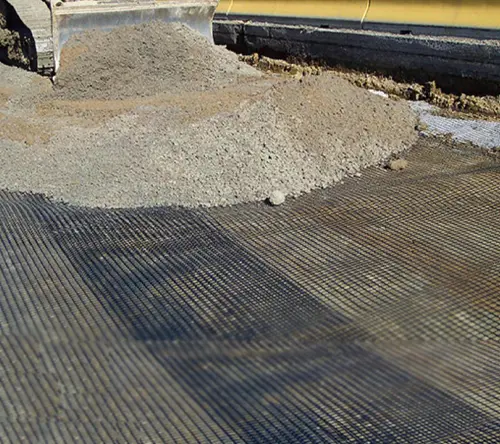
Fiberglass geogrid is a new kind of favorable earthwork base material to strength the road surface and road bed, which composed of fiberglass filaments coated with an inorganic sizing agent. These fiberglass products possess the advantage of high tensile strength in the warpand weft directions, low elongation, excellent temperature range, and good anti-aging and alkali-resistance. Fiberglass geogrid is extensively used for the reinforcement of asphalt pavement, concrete pavement and roadbeds. Compared to traditional materials, fiberglassgrid can reduce construction cost, extend road serviceand prevent deflection crack. Fiberglass geogrid can also be used to reinforce roadbed in soft soil for railways, airfields imigation channels,and water dams.
Fiberglass geogrid is a semi rigid product made of high-strength alkali free glass fiber and a mesh substrate made through internationally advanced warp knitting technology, and coated with surface treatment. It has high tensile strength and low elongation in both warp and weft directions, and has excellent performances such as high temperature resistance, low cold resistance, aging resistance, corrosion resistance, etc. It is widely used in the reinforcement of asphalt pavement, cement pavement and subgrade, and engineering projects such as railway subgrade, embankment slope protection, airport runway, sand prevention and control.

